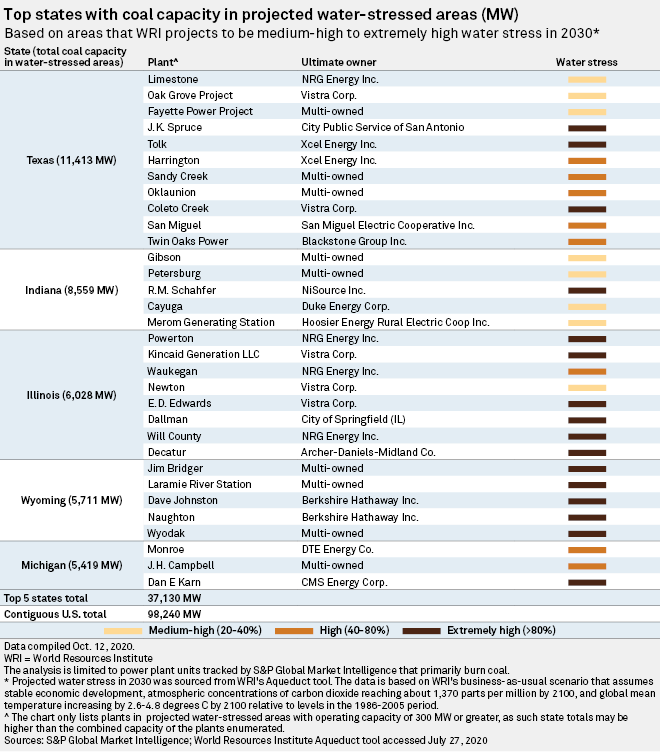Rising water stress risk threatens US coal plants, largely clustered in 5 states
Published on by Water Network Research, Official research team of The Water Network in Case Studies
| The coal-fired Scherer power plant in Georgia is the largest in the U.S. and in an area projected to face increased water stress by 2030. The multiple owners of the plants recently announced they would close one of the plant's generating units. Source: PRNewsfoto/Georgia Power |
Many of the nation's coal-fired power plants, often heavy consumers of water resources, are in areas projected to soon face water stress due to climate change.
|
Based on an analysis of data from S&P Global Market Intelligence and the World Resources Institute, power generators in Texas, Indiana, Illinois, Wyoming and Michigan operate about 37.1 GW of coal-fired generation capacity in areas projected to face medium-high to extremely high water stress — when humanity's competition for water exceeds nature's ability to replenish it — due to climate change in 2030.
Those five states are home to more than one-third of the 98.2 GW of coal capacity analyzed that falls into those upper-risk categories.
Thus, an aging coal-fired fleet already retiring en masse due to the economic challenges of competing with renewable energy and natural gas-fired generation may come under even more intense pressure due to competition for limited water resources.
Earlier this year, Tri-State Generation and Transmission Association Inc. CEO Duane Highley announced the company would be closing its remaining coal-fired power plants in New Mexico and Colorado as the company shifts to using more renewable energy.
"I'll say it presents an enormous opportunity for all of us, as we think about it," Highley said. "When you look at a typical coal facility, it uses an enormous volume of water, and the fact that that will be liberated and available for other reuse is going to be significant."
About 98.2 GW, or 44.6%, of the operating coal-fired capacity in the Lower 48 is in regions expected to face medium-high to extremely high water stress by the end of the decade . Of the 25.1 GW of coal-fired plants that have regulatory approval to retire, about 62% is in areas projected to face medium-high to extremely high water stress in 2030.
Many U.S. coal-fired plants are already struggling to compete with other forms of generation. As water becomes scarce, disputes around the resource are likely to increasingly factor into energy infrastructure decision-making, said Joe Smyth, a research and communications manager with the Energy Policy Institute who authored a July report examining coal and water conflicts in the American West.
"This is just one more sort of factor that may help push them to make those decisions in favor of closing coal plants and pursue renewables," Smyth said.

Taxonomy
- Disaster Risk Reduction
- Risk Mitigation Strategy
- Sea Level Rise Vulnerability Assesment
- Energy
- Risk Management
